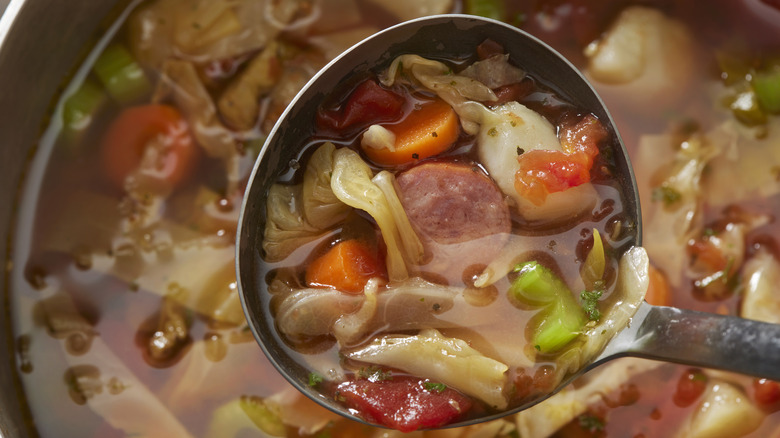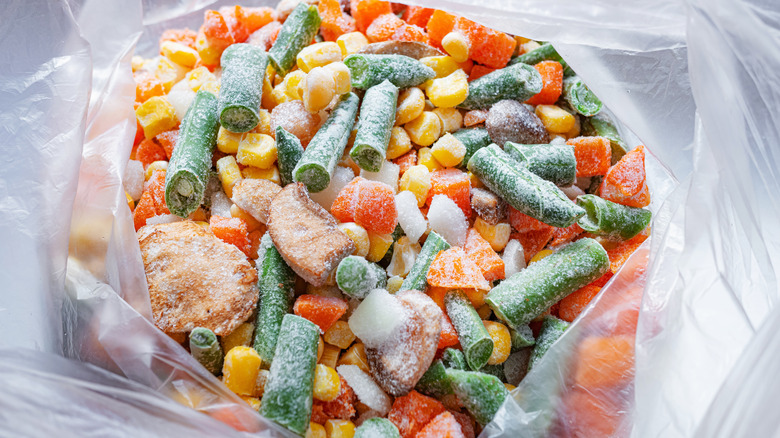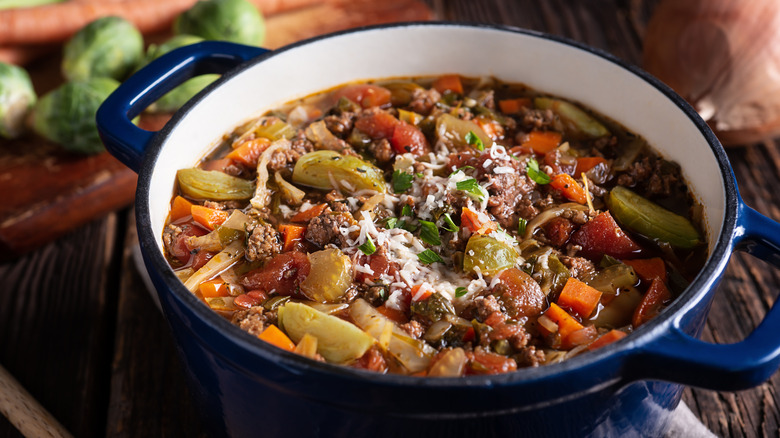If You Want To Make Soup With Frozen Veggies, Don't Skip This Crucial Step
Fresh ingredients are often thought to be better than frozen ones, but that isn't necessarily the case, at least when it comes to vegetables. Frozen varieties are typically packaged when they're in season and therefore at their highest quality in terms of taste and texture. And when looking to make soup like a professional chef, it's definitely more convenient to just toss in a bag of frozen vegetables than cut and prep your own. The one downside to using them in soup is that they tend to get mushy and fall apart.
Luckily, avoiding this is as simple as adding veggies in at a strategic time. If you're using carrots and snap peas directly from the freezer, you might assume it's better to add them to your soup at the beginning of the cooking process so they have time to thaw out. However, the truth is frozen vegetables don't need that much time to defrost or soften, so this inevitably leads to a spongy texture. Instead, add them towards the end of the cooking process.
Why do frozen vegetables turn mushy in soup?
Since soup recipes that use fresh vegetables typically call for adding them pretty early on, you might be wondering why it's better to add frozen ones much later. The reason for this is store-bought frozen versions are usually pre-cooked. Before being chilled and packaged, they're steamed or at the very least blanched. As a result, when you add them to your broth early on, they'll end up cooking for too long and become overly soft by the time the rest of the soup has finished cooking.
If you use vegetables that you froze yourself and didn't pre-cook, you might assume you won't have the same issue, but unfortunately, all frozen versions are prone to mushiness. This is because freezing causes the water inside them to turn into ice, which in turn causes the cell walls to break down. Later, when these chilled vegetables are added to soup, the ice melts, leading to a loss of firmness and structure. This means they will always have a slightly softer texture compared to fresh ones, but you can keep the mushiness to a minimum.
Ways to counteract texture issues in soup
Choosing the right frozen package at the store can also make a significant difference in maintaining its texture if you're making something like a hearty vegetable soup. Check to see whether the corn and carrots in the bag feel separated or have formed one big ice block because clumping is a sign that they have defrosted at some point, which reduces their crispness.
It also helps to not thaw out your frozen veggies before you put them in your soup, as this will waterlog them, causing them to go soggy and lose more of their crunch. Adding them while still in their frozen state, on the other hand, will help them retain their firmness. Ultimately if your vegetables still turn out too mushy, keep in mind that you can always opt for pureeing your soup. However, as long as you add them towards the end of the cooking process, there's a good chance you won't have to resort to doing so.


